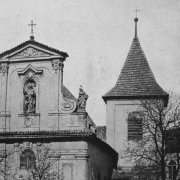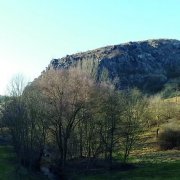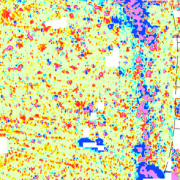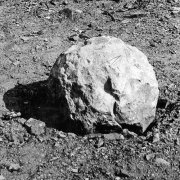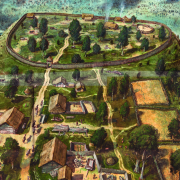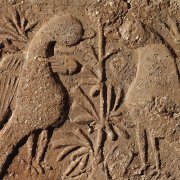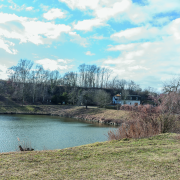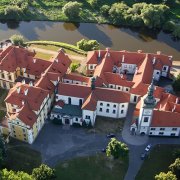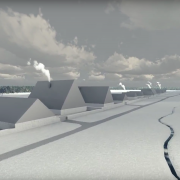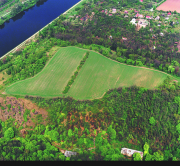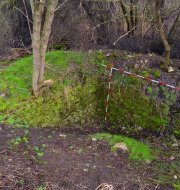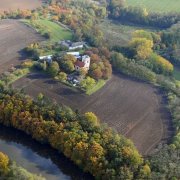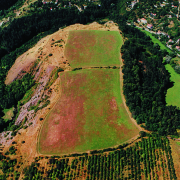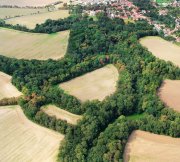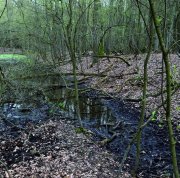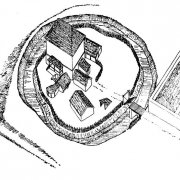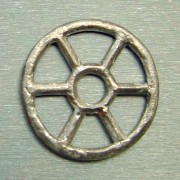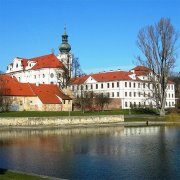-
Kostel sv. Filipa a Jakuba na Smíchově
První písemná zpráva z roku 1333 kostel připomíná již jako farní. O jeho počátcích a zakladateli se z historických pramenů nedozvídáme nic. Nejstarší dochovaná partie byla románská, k roku 1749 je kladena jeho barokní přestavba. Nevelký kostel…
-
Šárecké údolí
Těžištěm pravěkého osídlení v údolí Šáreckého potoka bylo výšinné sídliště na temeni Šestákovy skály, skalnatého ostrohu vybíhající nad údolí z jihu od Liboce. Zdejší nálezy daly jméno keramice středního neolitu (okolo 5500 před Kristem) tzv.…
-
Hradiště Hostivař
Existence hradiště Hostivař je známa již od počátku 20. století, ale tradiční povědomost o funkci této polohy je staršího data. Můžeme tak usuzovat podle jejích místních pojmenování, v nichž vedle názvu „Kozinec“ figurují též &bdquo…
-
Nový hrad u Kunratic
Nový hrad u Kunratic patří mezi ojediněle dochované středověké hradní stavby na území Prahy. Jeho zakladatel český a římský král Václav IV. (1361–1419) jej nechal vybudovat na výhodném ostrohu severozápadně od obce Kunratice. Stavba hradu,…
-
Kostel sv. Pankráce
Výzkum kostela a jeho nejbližšího okolí byl vyvolán stavbou metra C. Práce v interiéru kostela odkryly dochované zdivo základů románské rotundy. Zdivo náleží kostelu, zmíněném v listině z roku 1205: „Rytíř jménem Asinus (…
-
Obléhací tábor před Novým hradem u Kunratic
Uprostřed Kunratického lesa ve východním předpolí Nového hradu se do současnosti dochovaly četné terénní úpravy, které lze celkem spolehlivě interpretovat jako středověký vojenský obléhací tábor. Jeho vznik můžeme na základě kronikářských záznamu…
-
Hradiště Na Farkách
Plochý ostroh pomístně zvaný Na Farkách nebo Větrník či Nad Podhořím patří svým charakterem mezi typické výšinné polohy se stopami pravěkého osídlení. Leží mezi jihozápadním okrajem bohnického sídliště a hranou vltavského údolí, v areálu Botanické…
-
Kostel Stětí sv. Jana Křtitele v Dolních Chabrech
Chaberský kostel patří k velmi dobře zachovaným románským stavbám v Praze. Písemné zprávy o něm i samotné vsi jsou podstatně mladší než jeho vznik. Nejstarší spolehlivá zmínka o Chabrech pochází až z roku 1273, kdy zde měl svůj majetek Strahovský…
-
Výšinné sídliště v Obůrkách ve Vinoři
Jednu z nejvýznamnějších vinořských archeologických lokalit představuje skalnaté návrší zvané V Obůrkách. Tato strategicky výhodná výšinná poloha, chráněná původně ze tří stran meandrem Vinořského potoka, byla osídlena od neolitu po starší…
-
Bývalý cisterciácký klášter na Zbraslavi
V roce 1850 byl při opravě věže kostela v Horních Mokropsech nalezen plán zcela zaniklého klášterního kostela, který měl podle svého zakladatele Václava II. sloužit i jako královské pohřebiště. Otázka důvěryhodnosti tohoto nákresu (dochovala se…
-
Zaniklá ves Hol
Lidový název rozsáhlého Klánovického lesa – Vídrholec – lakonicky vyjadřuje jeden pozoruhodný sídelněhistorický proces, který se zde, na východním okraji Prahy, odehrál v pozdním středověku a v raném novověku. Označení pochází…
Jan Hasil - Michal Beránek -
Hradiště Zámka u Bohnic
Hradiště Bohnice se nachází nad pravým břehem Vltavy na severním okraji Prahy, na trojúhelníkovém ostrohu zvaném Zámka, Zámky či Na Zámcích. Jeho svahy na severu prudce spadají do Drahanské rokle a na jižní straně do údolí Čimického potoka, na…
-
Zaniklá ves Litožnice
Středověké osídlení v údolí Říčanského potoka datují archeologické nálezy do období 12. až 16. století. Tomu odpovídají i písemné zmínky zdejší tvrze a farního kostela sv. Gebharta, které se nacházejí v listinách a úředních knihách 14. - 16. století…
-
Hradiště Královice
Období 9. a 10. století přineslo v oblasti středních Čech výrazný nárůst počtu opevněných areálů, které zpravidla označujeme jako hradiště; celkově bychom jich nalezli v širším okolí Prahy na dvě desítky. Některé z těchto lokalit jsou…
I. Štefan - J. Hasil -
Hradiště Butovice
Eneolitické výšinné sídliště a později raně středověké hradiště bylo postaveno na protáhlém, plochém ostrohu nad Prokopským a Dalejským údolím, orientovaném ve směru jihozápad–severovýchod. Jeho čelo ze severní, západní a jižní strany obtéká…
-
Hradiště Vinoř
Přestože lokalita byla archeologům známá již od 19. století, byla jí po dlouhou dobu věnována jen okrajová pozornost. V 80. letech nechala pořídit detailní plán hradiště J. Richterová, jež zde též provedla orientační povrchové sběry. Od roku…
J. Hasil - I. Štefan -
Zaniklá tvrz Slavětice
Jedním z uzlů zaniklé středověké sídelní sítě, jejíž pozůstatky dodnes ukrývá Klánovický les, byla tvrz Slavětice. Podobně jako ostatní zaniklá sídliště na samotném východním okraji dnešního území hl. m. Prahy bylo i slavětické panské sídlo…
-
Čimice
Stejně jako mnohé další vsi v okolí Prahy byly i Čimice v 70. a 80. letech 20. století pohlceny rozpínající se periferií hlavního města. V přímé souvislosti s tím byla zbourána značná část historické zástavby starých Čimic, a tak smazán i…
Filip Laval -
Hradiště Závist a Šance
Vrch Hradiště, vypínající se do výšky asi 200 metrů nad pravým břehem Vltavy, leží při jižním okraji Prahy a vévodí oblasti kolem soutoku Vltavy s Berounkou. Na severovýchodě jeho svahy spadají do údolí Břežanského potoka, na západní straně do…
-
Klášter benediktinů v Břevnově
Areál benediktinského kláštera byl archeologicky zkoumán vícekrát. Nejvýznamnější objev přinesly výkopy prováděné téměř deset let (od r. 1965) ve východní části kostela. Pod podlahou zde byl odkryt půdorys krypty náležející k nejstaršímu…
